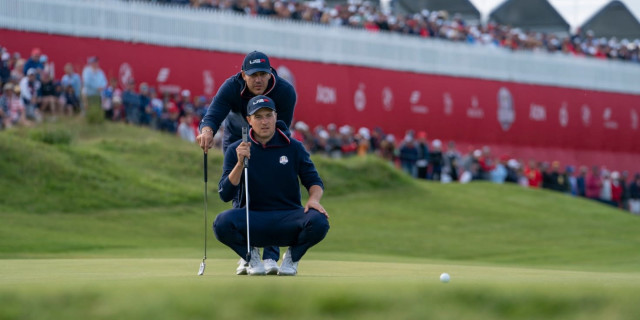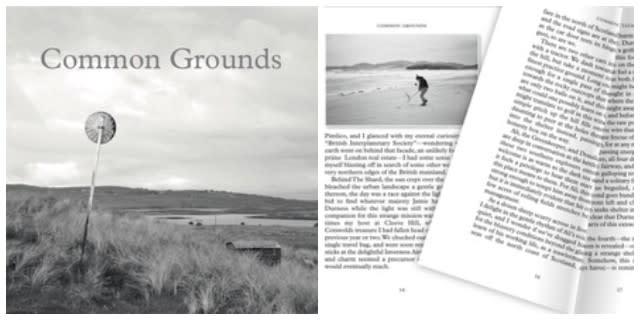
Training Your Brain Could Improve Putting Under Pressure
FORGET 320-yard drives. The Ryder Cup will be won - or lost - on the greens at Marco Simone.
Over the years we have seen many crucial short putts missed as the pressure takes it toll. Craig Stadler and Mark Calcavecchia are just two Americans who will not want to be reminded about the tiddlers they failed to hole.
But perhaps the most famous miss of all came from Bernhard Langer in 1991, when the German’s six-foot putt to retain the trophy failed to touch the hole.
Langer later said it was the most pressure he had felt under at a Ryder Cup. Remember that this is a golfer who has afflicted by the yips throughout his career.
The star of the American team this time around is world number one Scottie Scheffler, a man who has found that his own putting stroke and statistics have come under the microscope this year. A new study concludes that we should not be surprised to see so many short putts missed.
He was joint 23rd at The Open, ending an incredible run of 19 consecutive events in which he finished 12th or higher. But 2023 could, and should, have been better. And Scheffler knows it.
"I had back-to-back tournaments [in the spring] when I could have won but I putted poorly, and all of a sudden, it became this thing," he said at The Open in July.
"I'll watch the highlights of my round, and even the announcers, any time I step over a putt, it's like, 'this is the part of the game he struggles with'. You guys see me miss a 12-footer and [say] I'm struggling again."
From tee to green, the Texan is untouchable. The stats prove that. But his putting stats, of which there are many, paint a different picture.
He holed only 25% of putts from 10 feet, compared with the PGA Tour lead of 69%. Only two players out of 181 are below him on that list. Scheffler is 168th from four to eight feet, and 160th from 10-15 feet. It doesn't make for pretty reading.
At last month's BMW Championship in the US, he conceded he was feeling the pressure after missing a six-foot birdie putt on the 16th and a shorter one for par on the next. He finished two shots behind winner Viktor Hovland.
Andy Cooke, a senior lecturer in performance psychology at Bangor University, told BBC Sport: "Imagine that pressure. You're quite stressed. Your heart is beating faster. Your muscles are a bit more tense. The psychology is influencing your physiology and your technique goes awry.
"But new brainwave technology may actually allow us to predict whether a putt will go into the hole or not."

The idea of psychology influencing physiology is nothing new. Seven-time major winner Arnold Palmer once said: "Golf is a game of inches. The most important are the six inches between your ears."
But 21st Century advances in technology to monitor the brain are making Palmer's famous line more relatable.
Langer admitted that he had the yips. Scheffler refutes that there is anything wrong with his stroke.
Cooke, who has been working in the field for more than a decade and is part of Bangor's Institute for the Psychology of Elite Performance, said: "Technology is making it possible to collect high quality movement data."
While it is still early days in the accuracy of wireless monitoring of the brain, players such as England's Justin Rose have used a brainwave-reading headband to train himself to control his emotions.
Jason Day and Bryson DeChambeau have also used similar technology, which is readily available to buy.
"Most of us can learn quite quickly how we can use different thought processes to change our brainwaves," says Cooke.
"Neurofeedback is a type of bio-feedback for the brain. Specifically we use small sensors on the scalp to measure brain waves and then we display them on a screen in real time, effectively showing people a mirror into their brain.
"The aim is to try and train people to produce the pattern of brainwaves that we think is optimal for golf putting. We want them to learn to recognise that state and learn to initiate their backswing only when that desired state is produced."
Cooke explains that, in the vast majority of people, the optimal pattern for putting is a quiet left hemisphere of the brain and an active frontal area. The left hemisphere is where verbal communication tends to come from, so if it's 'noisy', that could lead to overthinking your technique, while an active frontal area is good because that is implicated in movement, planning and control.
In Cooke's study, he played a tone through headphones while participants were standing over a putt. The frequency changed and volume faded as the brain reached the optimal pattern.
So how do you actually train your brain? Cooke equates it to hooking yourself up to a heart monitor. "You can quickly see how fast your heart is beating and then you can use relaxing images to help slow it down, or think about different things to speed it up," he says.
"It's the same with brainwaves. People experiment using their own psychological strategies and then after a few sessions they learn to get into the zone and hit the putt."
The study indicated that the two seconds before the ball is hit is critical. Participants were asked to hit 200 eight-foot putts a day for three days. The data showed performance improved by 21% in high-handicappers after three hours of training with neurofeedback.
The bottom line is that, as golfers, we will try anything that might improve our performance. And the truth is that most of us just don’t spend enough time on the practice putting green.
Related Content
About the author

Derek Clements is a seasoned sports journalist and regular Golfshake contributor, specialising in tour coverage, opinion pieces, and feature writing. With a long career in national newspapers and golf media, he has reported on the game across Europe, the United States and Australia. A passionate golfer, he has played and reviewed numerous renowned courses, with personal favourites including Pebble Beach, Kingsbarns, Aldeburgh, Old Thorns and the K Club. His love of the game informs his thoughtful commentary on both professional golf and the wider golfing community.

The Ryder Cup is unlike any other tournament in golf and the atmosphere is something that every golf fan should experience. The experts at Golfbreaks.com can help with all aspects of your Ryder Cup experience, from accommodation and ticket packages to hospitality and travel and playing some of the fantastic nearby courses.
Tags: ryder cup PGA Tour european tour dp world tour










